
Talk to anyone from HSV’s marketing department and you’ll probably be told that six-cylinder performance cars don’t cut it in the local prestige/performance segment. The HSV XU6, even with its supercharger and evocative name, was a major flop. What started out as a fully fledged model soon wound up being a car built only to order. Except nobody did. Order one, that is.
This feature was originally published in MOTOR’s April 2004 issue
Of course, such a conclusion disregards the fact that the blown Holden V6 was a nail of a thing in the first place. It also conveniently sidesteps history. Hot sixes have been staple products in local performance line-ups since the first Valiant Pacer blatted into life back in the 1960s. There followed the legendary Torana XU1 and, since 1991, the Falcon XR6. And, most recently, Ford has been sticking with the notion of ripping inline sixes and treating us to the XR6 Turbo. And this has made us happy.
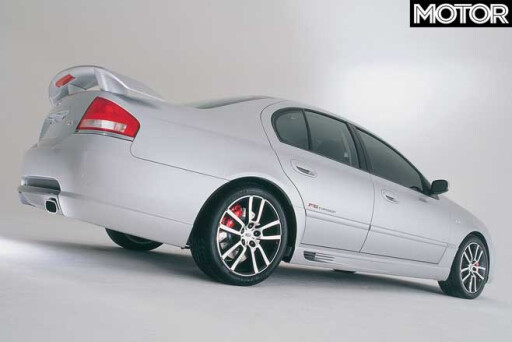
Of course, the keen observer will note that even the blown XR6 still wears a Ford badge, while, until now, Henry’s high-end FPV outfit (as direct a challenger to HSV as you’ll ever see) has offered up only V8s. But that’s all about to change, with FPV pulling the wraps off its Next Big Thing and MOTOR dropping around for an exclusive look-see. It’s called the F6 Typhoon, although we wouldn’t mind betting it’ll eventually become known as simply the F6.
But more importantly, the thing is more of an FPV GT with a turbo six, rather than an XR6 with some more fruit. See, not only does it get some extra flash, but there’s also a good-sized extra dollop of dash courtesy of a reworked mill that bumps power considerably and torque very considerably.
Mind you, that will be FPV’s biggest marketing hurdle: getting potential owners to recognise the F6 as a pukka FPV product and not a jumped-up XR. But a scan of the spec sheet suggests the task will not be an impossible one.
At the moment, the F6 Typhoon is a prototype that will do the rounds of Aussie motor shows to gauge reaction. Yeah, derr… But the single existing example looks so close to production ready that it’d be hard for FPV to pass it up. The unique F6 front and rear bumpers look as if they’ve come off production tooling, right down to the pewter (call it grey) highlights and mesh grille insert. The rear spoiler uses FPV’s three-legged signature and there are FPV side skirts as well. The intercooler is highlighted and plonked behind another mesh insert and there are new, aggressively styled 18-inch alloys.
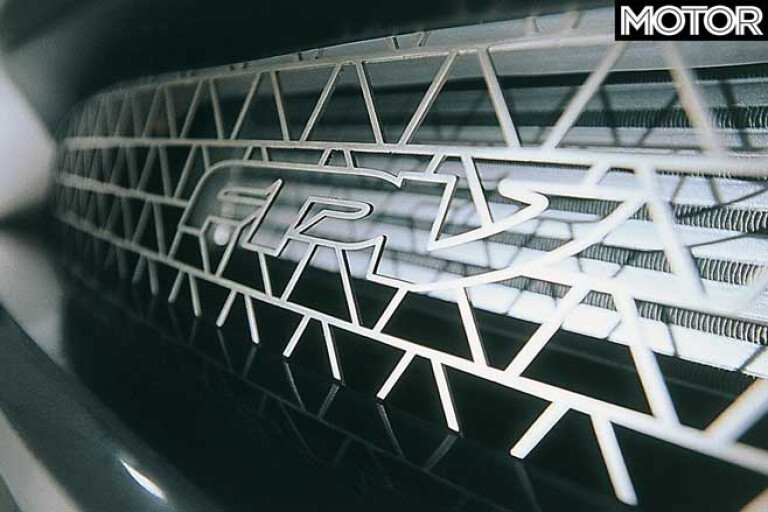
Inside, the F6 gets its own trim, with patterned cloth and suede and aluminium highlights on various bits and pieces, including the scuff plates. Suspension has been retuned to suit the F6’s role in life and the otherwise optional Brembo brake package with the four-spot front calipers, twin-spot rears and grooved rotors is standard fitment.
The engine, meanwhile, is the work of Pommy engineer Ian Downing. And he’s no stranger to the Ford inline six, beacause it was he who first XR6ed the engine back in 1991 and then helped to develop the VCT version for the AU. Most recently, he was also involved in the turbo six project, so he knows his way around the old girl.
But the one thing that was never going to happen was for FPV to build a temperamental, unreliable engine with any possible reduction in durability.
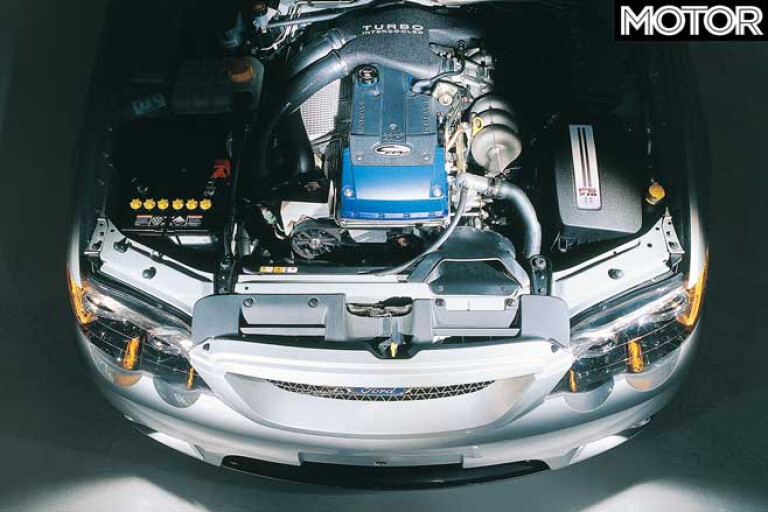
"We always aimed at minimising strain," says Downing. "So, to get more out, we worked hard at reducing losses on the intake side, to get more intake manifold pressure without necessarily increasing the boost pressure."
The move to a dual-entry airbox was a big part of the development, and that alone saw a 40 percent reduction in the pressure loss into the compressor. Oh yeah, there's also a 50 percent bigger intercooler.
The result is that peak boost has jumped to about 0.6bar (0.3 in the XR6) and a tiny tweak to the wastegate has been the only turbo fiddle.

All up, you're talking 270kW at 5250rpm and a whopping 550Nm of torque at 4250rpm, the bulk of which is available from about idle. Compared with the XR6T, those figures represent a 30kW power hike and a like-wow 100Nm torque jump.
But, says Downing, that's about it for now. "We found that about 280kW is the effective limit right now. Beyond that point we get uncontrollable thermal output."
Such thermal output is partly addressed by an engine oil cooler which slips in between the cylinder block and the oil filter and is plumbed into the engine's water jacket.
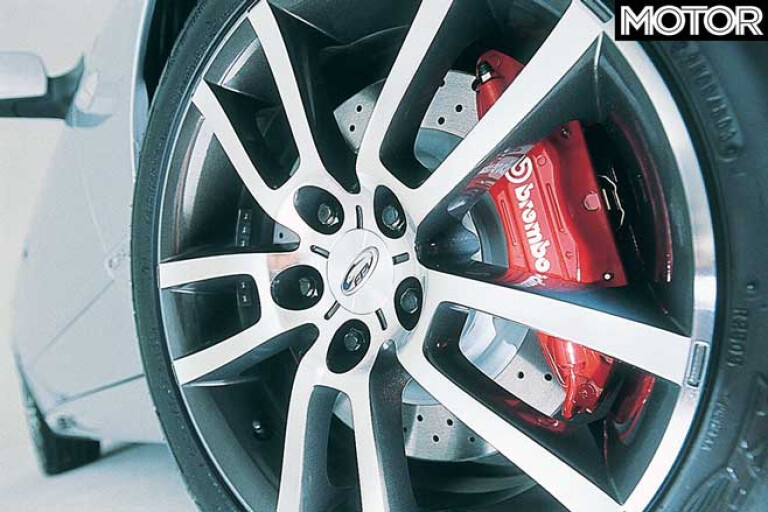
The engine is tougher in some other important respects, too. Heavy-duty valve springs on both the intake and exhaust side are fitted and, more significantly, the conrods are now beefier in cross-section and have fully floating gudgeon pins. The motor now works best with 95RON fuel, too, although it'll run on 91 with a fair chunk of ignition advance sheared off by the computer.
One of the worst-kept secrets in the biz is that Ford has some new gearboxes in the pipeline. For now, though, the prototype Typhoon is fitted with a T5, the very same spec T5 as fitted to XR6 TUrbos, so it runs the 'old' V8 cluster.
You get the feeling, though, that the T5 has only been bolted in to keep the tailshaft from dragging on the road and the sun off the cross-member. There is, however, a new AP Racing twin-plate clutch, and a new six-speed manual gearbox (the HSV XU6 was auto only, remember) of some sort in the F6's future.
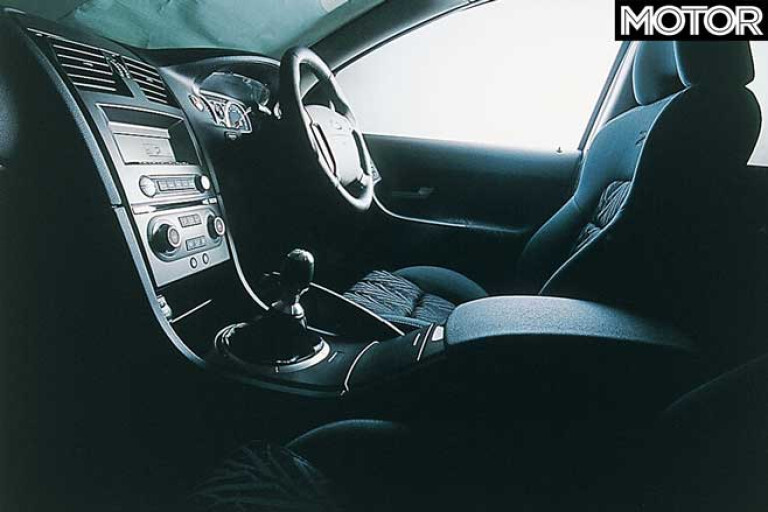
So what are the odds of the Typhoon reaching production? Apparently there are still some cost issues to be sorted out at an investment level, but you can pretty much bet the ranch that the Typhoon will be blowing into FPV dealerships around the end of this year.
And just to show that FPV is not your normal car company, the suits are happy to yap about possible pricing, normally the most closely guarded subject. Figure on between $56k and $59k, which puts it perilously close to the GT's opening gambit of 60 grand. Then again, it'll be as quick or quicker - the GT's performance figures were the target for the F6 - and right on the money for equipment too.
Torque, for instance, outstrips the GT's V8 up to 5000rpm, and the claim now is that the F6's turbomill is the torquiest locally developed production engine of all time. Could be, too.

And will it pinch sales from V8-powered FPVs? Definitely not, says the marketing department.
You'll always have a group of buyers who won't drive anything but a V8. F6 buyers will come out of European cars and Japanese hot-rods, apparently.
And who knows? If the performance is anything like the specification suggests, the Typhoon might just be one hell of a way to move five people and their golf clubs. Even though it's a fraction heaviers than an XR6T, with all that extra oomph it should go close to a neat six seconds to 100km/h and maybe even a high 13-second standing quarter. And if it can do that, it should stick it to the six-pot naysayers in 400 fairly explosive metres.
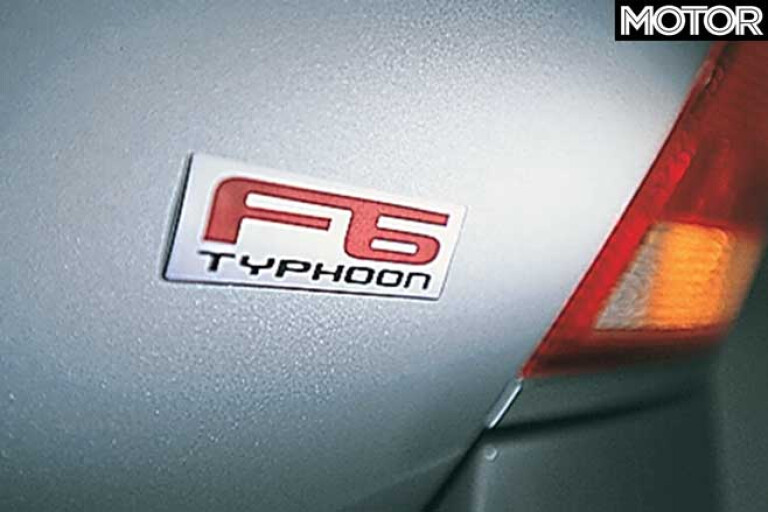
FAST FACTS
2004 FPV Falcon F6 Typhoon
BODY: 4-door, 5-seat sedan
DRIVE: rear-wheel
ENGINE: 4.0-litre inline-six, DOHC, 24v, turbo
BORE/STROKE: 92.3mm x 99.3mm
COMPRESSION: 8.7:1
POWER: 270kW @ 5250rpm
TORQUE: 550Nm @ 4250rpm
WEIGHT: 1715kg (est)
POWER-TO- WEIGHT: 157kW/tonne
TRANSMISSION: 5-speed manual
SUSPENSION: double wishbones, coil springs, anti-roll bar (f); Control Blade IRS, coil springs, anti-roll bar (r)
L/W/h: 4944/18649/1435mm
WHEELBASE: 2829mm
TRACKS: 1560/1575mm (f/r)
BRAKES: 325mm cross-drilled discs, four-piston calipers (f); 303mm solid discs, two-piston calipers (r)
WHEELS: 18 x 8.0in (f/r)
TYRES: Dunlop SP Sport 9000; 235/40ZR18 (f/r)
PRICE: $56,000 - $59,000
Something borrowed
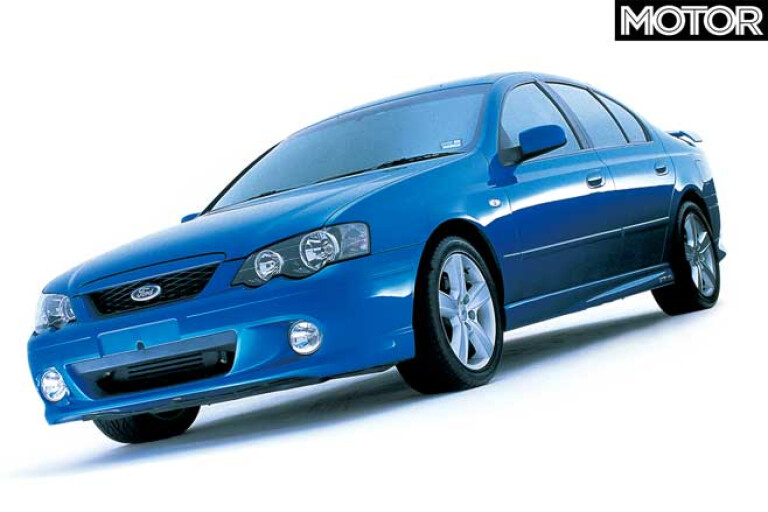
Retro-fitting bits from a new model to an old model is nothing new, but it's a favourite pastime for folks who like to fiddle and don't want to get locked in to buying the latest model every time the factory burps out a new one.
So what bits of the Typhoon will bolt to an XR6T? Well, you can forget the stronger conrods and tougher valve springs, but some of the rest of the package should be compatible. The dual-entry airbox, for instance, is a cinch for a retro-fit and should get an XR6T breathing a bit more freely.
Same goes for the intercooler, although whether you'd plump for a Typhoon cooler or just go for an aftermarket job is up to you. Either way, something with about 50 percent bigger lungs than the stock XR6 unit is going to make a big difference. Same goes for the engine oil cooler, which is a nice piece of engineering on FPV's part.
But you'd probably get a more marked drop in oil temperature by going to a conventional air-to-air style cooler similar to a transmission cooler. The only catch there is that you'd need to regulate the oil flow through the unit so it wasn't making cold oil on start-up even colder. A thermostat would sort it.
Six shooters

Yeah, yeah, so we're Australians and we drive V8s, right? Well, some of us do, and some of us prefer a tough six. And when it comes to stout six-bangers, the F6's 270kW and 550Nm put it up there with the world's best. So how does it compare with some of the planet's other dirty half-dozens?
BMW's M3 is possibly the best six-potter made anywhere and it doesn't even have a pump fitted. But at 3.2-litres, its 252kW and 365Nm mark it as one of the world's most developed powerplants.
The Porsche 911 GT3 is likewise atmospheric, and it makes 280kW and 385Nm from its 3.6-litre boxer six - a power figure similar to the F6, although the latter creams it for torque.
Speaking of six-cylinder torque, the king of them all is the 911 GT2 mill, which makes a scary 340kW and 620NM. Wrap it up in a 1440kg package and you're talking a low 12-second quarter mile. Then again, it is 400 grand, which kind of brings things back into perspective and the Typhoon back into the running.

COMMENTS